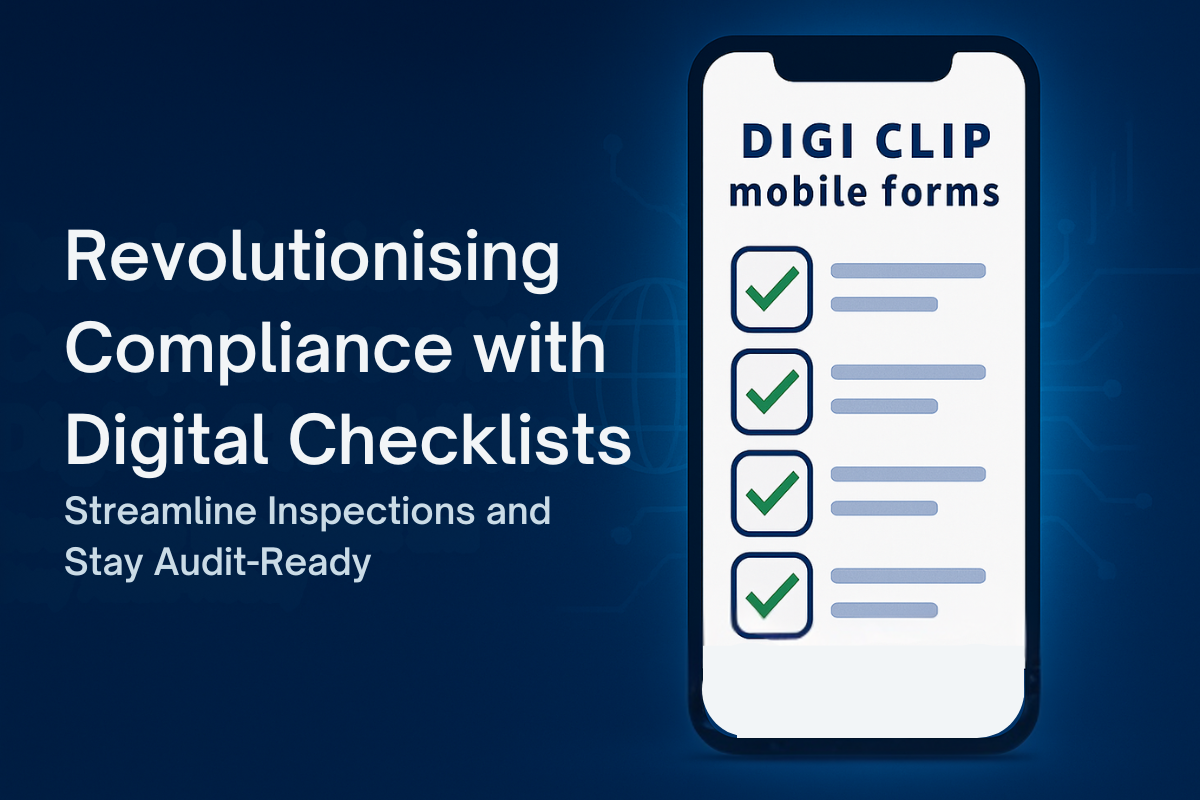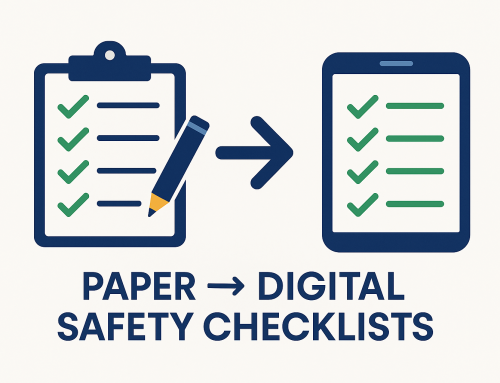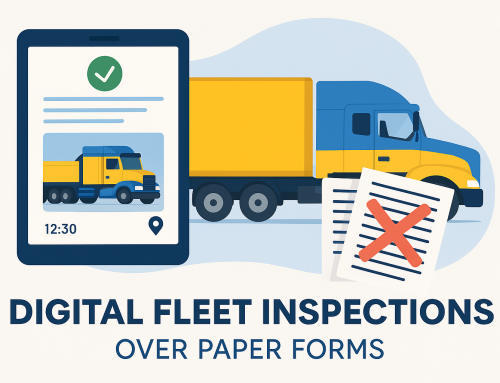DOT Pre-Trip Inspection for Trucks: Fleet Safety & Compliance Done Right
DOT pre-trip inspection for trucks is the single most reliable daily control you have to reduce incidents, protect drivers, and keep vehicles compliant with federal and state regulations. In this guide, we break down what to check, how to document it properly, and why moving from paper to digital checklists dramatically improves audit readiness, visibility, and uptime.
- Why DOT Pre-Trip Inspections Matter
- What to Check: DOT Pre-Trip Essentials
- Digital vs Paper: Compliance & Evidence
- A Frictionless Daily Workflow (Mobile First)
- Comparison Table: Paper vs Digital (DIGI CLIP)
- Pro Tips to Lift Compliance & Fleet Safety
- Helpful Internal & External Resources
- Frequently Asked Questions
- Conclusion
Quick Highlights
- Embed the DOT pre-trip inspection for trucks into your start-of-shift routine to cut risk and downtime.
- Use photo evidence, geo‑time stamps, and action assignments to prove checks were done and issues were escalated.
- Digital checklists reduce missed items, standardise compliance, and speed up corrective actions.
- Paper won’t save you in an audit — proof will.
Why DOT Pre-Trip Inspections for Trucks Matter
Pre-trip inspections are mandated so defects are identified before wheels turn. The outcome is fewer roadside violations, fewer incidents, and better asset availability. A robust process also protects your brand — and your contracts — by demonstrating due diligence with auditable records.
What to Check: DOT Pre-Trip Essentials
Build your truck pre-trip checklist around these common DOT and FMCSA categories. Capture photos wherever a “Not OK” is selected, and assign an action immediately.
- Brake system: service brakes, parking brake, lines/hoses, leaks.
- Steering: wheel free play, linkage, power steering, leaks/noise.
- Tyres & wheels: condition, tread, inflation, wheel nuts, rims.
- Lights & reflectors: headlamps, indicators, brake lights, clearance/ID lights, reflectors.
- Suspension: springs, shocks, air suspension, mounts.
- Coupling devices: fifth wheel/kingpin, safety latch, airlines, electrical.
- Fuel & exhaust: leaks, caps secure, exhaust routing/condition.
- Load securement: chains/straps, anchor points, curtains, gates.
- Cab & safety: mirrors, wipers/washers, horn, seatbelts, emergency equipment.
- Documentation: licence, permits, insurance, inspection reports.
Authoritative references for DOT/FMCSA requirements:
- Federal Motor Carrier Safety Administration (FMCSA)
- 49 CFR Part 396 — Inspection, Repair, and Maintenance
Digital vs Paper: Compliance & Evidence
Paper forms get lost, lack proof, and make trending impossible. A mobile-first workflow with DIGI CLIP gives you time-stamped records, photo evidence, and an Action Register to ensure defects are escalated and closed. That’s the difference between “we inspected” and “we can prove it.”
A Frictionless Daily Workflow (Mobile First)
- Driver opens the pre-trip checklist on mobile (works offline; data syncs once connectivity is restored).
- Yes/No/N/A flow with required comments + photo on every No.
- Auto time + geo stamp at submission for defensible records.
- Create a corrective action from the form to the Action Register with a due date and assignee.
- Manager views dashboards/exports to identify trends and verify close‑outs before audits.
Comparison Table: Paper vs Digital (DIGI CLIP)
| Capability | Paper Pre-Trip | Digital with DIGI CLIP |
|---|---|---|
| Evidence of checks | Signatures only; easy to dispute | Photo proof + geo‑time stamps; hard to dispute |
| Defect escalation | Manual; prone to delays | Instant Action Register assignment with due dates |
| Audit readiness | Boxes of paper; hard to find | Searchable records + exports in seconds |
| Driver experience | Slow, repetitive, error‑prone | Guided flows, required fields, fewer misses |
| Analytics & trends | Manual data entry | Dashboards highlight recurring defects |
| Remote operations | Drivers must turn in paper | Offline capture → auto sync when back online |
Pro Tips to Lift Compliance & Fleet Safety
- Front-load safety: Make the DOT pre-trip inspection for trucks a “no roll” requirement.
- Use conditional logic: If “Not OK,” force a photo and a corrective action assignment.
- Standardise evidence: Require a wide shot + close-up for critical components (e.g., tyres, coupling).
- Close the loop: Supervisors verify completion with a quick mobile sign‑off.
- Trend the data: Review monthly defect patterns and fix root causes (training, parts, scheduling).
Helpful Internal & External Resources
- Digital Vehicle Inspection Checklists for Logistics
- Top Benefits of Digital Inspection Apps for Compliance
- From Paper to Digital: Compliance Tools for SMBs
- Industry-Specific Digital Checklists
Authoritative references:
- FMCSA — official guidance and updates
- 49 CFR Part 396 — inspection, repair, maintenance
Frequently Asked Questions
What is a DOT pre-trip inspection for trucks?
How long should a DOT pre-trip inspection take?
What happens if a defect is found?
Are digital checklists acceptable for audits?
What if drivers are offline at the depot or on the road?
Can managers track unresolved actions?
“We take vehicle and driver safety very seriously, and DIGI CLIP helps us achieve both.” — Dillon, Operations Manager, Link Transport
About DIGI CLIP Mobile Forms
DIGI CLIP is a mobile checklist and inspection app that simplifies safety, compliance, and operational reporting. Designed for industries like transport, warehousing, agriculture, and construction, DIGI CLIP replaces paper forms with real-time digital checklists. Built-in photo capture, automated alerts, geo‑time stamping, and an Action Register ensure nothing gets missed.
Why Try DIGI CLIP? Because safety actions don’t count if you can’t prove them. Start your free trial—no credit card needed—and see how simple compliance can be.
Conclusion: Make DOT Pre-Trip Inspections Unmissable
When the DOT pre-trip inspection for trucks is easy to perform, impossible to skip, and backed by photo evidence with geo‑time stamps, your fleet becomes safer, audits become routine, and downtime drops. Paper can claim you inspected — digital proves it, assigns actions, and helps you fix the root causes faster.
If you liked this post? Why not share it!








Leave A Comment